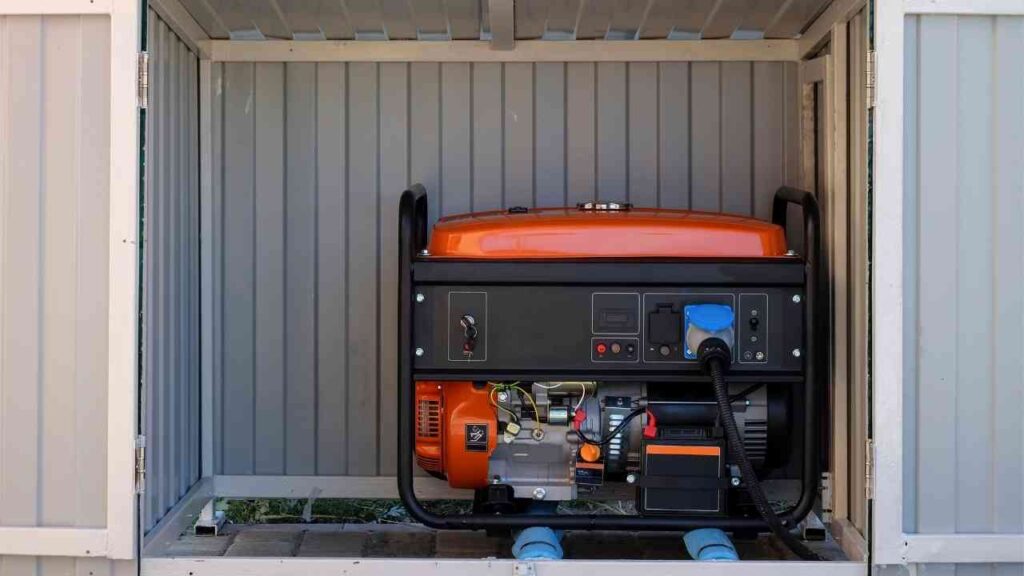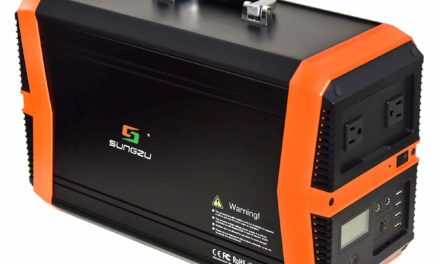
Portable generators are one of the top equipment with inimitable significance. You’ll need them to power your home, office, shop, kiosk, and tent continuously in the absence of electricity.
Regardless of the sizes or design of their frames, there is a need to maintain the generator. They require apt maintenance for them to last a long time. And the most straightforward manner of maintaining a portable generator is by preventing its exposure to rainfall.
Rain could rust the tank and the frame of the generators. It could ebb its way into the fuel tank, power outlets, and eventually distort the function of the engine if it repeatedly occurs.
Indeed, you wouldn’t want to save it indoors to prevent it from rain either. Instead, you want to find out possible means to avoid the generator’s exposure to rainfall and drizzles by getting a weatherproof shield for the generator while you place it outdoor.
That’s why you’re to learn vastly on How to Protect Portable Generator from Rain before installing your generator. Of course, you learn about the protection better if you only know the types of generator protection. Check them out below.
Types of Portable Generator Protection:
Portable generator protections are available in the plastic, metal, pop-up canopy, weatherproof polymer, and so on. But, we can classify their existence into two anyway.
We have the ready-made and those made by DIYers. Some manufacturers provide the protector alongside the product on delivery. At times, it could be in weatherproof nylon or a collapsible enclosure.
On the other hand, DIYers could construct portable generator protection with coated metal or wooden sheds. Nevertheless, you can learn about the danger of using a generator in the rain below.
Can You Run a Generator in the Rain?
Yes, but with the aid of generator protection. If you don’t have a generator protector, then don’t try running your generator in the rain. It could lead to electrocution as ions are exchanged with radicals of the water compound.
That could even lead to the improper placement of the generator, as mud could build up around the engine. It could even cause the encasement of the engine and the tank to rust.
How to Protect Portable Generator from Rain: 4 Tips
1. Buying a Generator Shield
- Realize the size of the generator and the suitable shield that would work with the generator.
- Choose a tent made of metal, wood, plastic, or trampoline. Choose it with respect to the weight if you’d be lugging it from one place to another.
- If your preference lies in metal, then opt for those with pure steel because of high no corrosiveness.
- Buy a generator shield that would cover the tank, engine, and base 100%. Check if it corresponds with the design of the generator. Look out for the exhaust and see if the shield could allow the flaring of the gas to the air efficiently.
- Seeking advice from your buyer on the propriety shield would aid you to be on the safer side of buying the protection.
- Consider the clearance of the shield from the generator’s frame to maximize enough spaces for the generator.
2. Placement of the Generator Against Rainfall
Use the generator 10ft or 12ft away from your premises if you intend to use the generator in the rain. This would make the environment safe around children.
Ensure the generator’s base is suspended slightly higher than the bare floor. This would apparently prevent the generator’s base from immersing in nearby stagnant water.
Also, the proper placement of the generator would prevent the generator from storms. Therefore, chaining the generator protector to the generator’s frame would boost the rigidity of the two parties.
Placing the generator on a concrete floor is the best. However, the region’s maintenance is necessary to prevent dust clogging in the generator holes, eventually damaging the generator.
3. Housing the Generator with a Shed During Rainfall
- Make a waterproof leather available that could run from the top of the portable generator to the floor, obviously covering both sides of the generator.
- Widely spread it at the top of the generator while you key it down with a stone or heavy-duty equipment. This would basically prevent water from permeating into the tank through the aid of the breeze.
- Use the portable generator protector’s manual to shield the generator. Ensure that there’s enough clearance between the wall of the shield and the frame of the generator. In other words, the resonance of the generator sound shouldn’t be vibrating the generator in whatever form.
- There should be room for the exhaust to release its gas outward and the vents to release heat without obstructions.
- Apt observation ought to be conducted so well before moving on to the next step.
4. Check the Electrical Connections
No electrical cord should be seen twisting as it runs from the generator to the house during rainfall. This could lead to a disruption in the power supply.
Also, the wires shouldn’t be seen exposed lying in a pool of water, which could be exceedingly risky if care isn’t taken. Furthermore, the connection from the generator to the transfer switch ought to be done so ideally to get the perfect result.
The grounding of the generator, in addition, shouldn’t be left out either. Ground the generator before the rain starts. Nevertheless, ensure that you follow the guidelines stated by the manufacturer always.
When to Switch off the Generator?
Portable generators are luggable from one place to another. Therefore, switching off the generator when the rainfall becomes intense shouldn’t be an issue; it’s necessary.
Generators shouldn’t be around a waterlogged area, and neither should you allow the generator to become wet in whatever way. So, each time you see that the rain is becoming uncontrollable, you are to switch off the generator and save it in a cool and dry place until the rain stops.
Is a Generator Ruined If it Gets Wet?
Yes, it typically causes a short circuit, which could lead to a spark as time goes on. It could enter into the power outlets and get dip into the engine and the generator’s motor. Also, it could rust the frame of the generator.
And, if it gets into the tank in any way, then be assured that it could rust the generator’s tank and cause it to leak. It could dwindle the performance of the generator as times go on. Therefore, that’s why an enclosure is essential for your generator.
Do You Need to Cover a Generator in the Rain?
Yea, but that’s if the rain is not torrential. You will need to shield the generator to avoid water from penetrating the power outlets and so on. You’ll need an enclosure for the generator with and without the rain.
The rays of sunlight beating the generator while working isn’t so good for your generator. An enclosure would keep the engine cool always. So, get one for your generator today. Buy any type that you suppose would work effortlessly to your comfort.
How Do I Cover My Generator While Running?
That’s pretty simple! Buy a shed that is recommended for the size and shape of your generator. Understand the design by differentiating the front from the rear. Notwithstanding, you might need to switch off the generator’s power and remove the power cord before you begin.
Ensure that all the lid covers on each power outlet have snapped perfectly on their respective spots. Then, shield the generator with the cover intuitively or with the aid of the manual. Make sure that the generator’s placement and the shed are rigid so that annoying sounds won’t be emanating.
Can I Put a Tarp Over My Generator?
Yes, but it’s more functional when the rain is only drizzling. Moisture is enough to rust the frame of the generator. So, using a tarp for the generator is a brilliant idea. However, make sure that the canopy doesn’t touch the generator because it’s highly flammable, and blocking the exhausts orifice could damage the generator. Therefore, cover the generator with the canopy but do it appropriately.
Safety Tips:
- Don’t touch the generator’s engine with a wet palm. It could shock you.
- Avoid using the generator around a damp region. Ground the generator in the recommended manner.
- Wear footwear whenever you’re using the generator in a wet environment.
- Switch off the generator before shielding the generator with your shed.
- Repair the generator when you notice that it has grown mechanical faults all of a sudden.
Final Words
You can use the tips here to protect the generator during rainfall. That is all you have to learn about the possible steps of protecting the generator during rainfall. As long as one adheres to the fundamental instructions, there is a certainty that one will use the generator for a long time.
In a nutshell, buy a generator shed that’s most suitable for the type of generator you’re using. That’s the best way of getting things right from the start.





